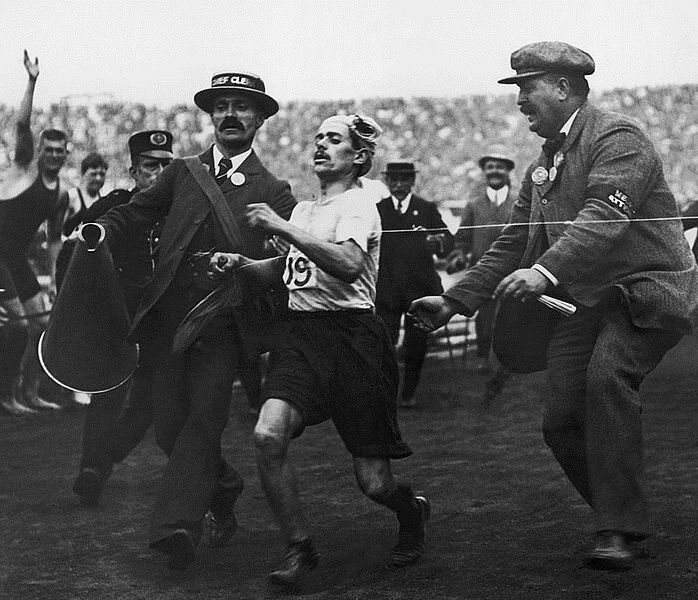Due to insufficient research on dangerous substances in the past, many believed that cocaine, heroin, rat poison, and alcohol are beneficial for an individual’s physical performance. Even until the 1980s, many athletes continued imbibing alcohol and rat poison to quench their thirst and improve endurance.
Generally believed to be a performance enhancer, Olympian runners downed alcohol and rat poison during their marathon course to aid their endurance.
The 1908 London Olympic Marathon
The London Olympic Marathon on July 24, 1908, was a bizarre turn of events. The competitors struggled under the rough conditions as the marathon course lengthened for nearly two miles. In addition to that, the city continued to bask in the summer heat. Among the 55 runners who ran from Windsor Castle, only 27 endured to the finish line as most quit before reaching the course’s halfway mark.
The primary factor in the Olympian runners’ downfall was the supposed performance enhancers they drank. During that time, many believed that alcoholic drinks and rat poison cocktails improved the athletes’ physical performance. And as the Olympian athletes ambitioned to finish the marathon course, they drank brandy and rat poison mid-course to aid their endurance. At least a few runners ingested alcohol or rat poison during the marathon, including the first four athletes to finish the course.
Crowd favorite Tom Longboat, a record-breaking athlete that won the previous Boston Marathon, never finished the 1908 London Marathon. As he fell victim to the summer heat, he sought a beverage to quench his thirst. As he reached the 17th mile, he drank champagne to rid himself of dehydration; within two miles, he collapsed and no longer took part in the race.
Many more fell victim to the supposed energy boosters, including the first runner that crossed the finish line, Dorando Pietri. During the marathon, Pietri collapsed multiple times. Although he finished first with a hollowed cork wedge in his hand, supposedly from alcohol, he became disqualified as a concerned doctor helped him cross the finish line. Some remain convinced that alcohol-induced Pietri’s loss, but others believe Longboat and Pietri fell victim to rat poison. (Source: Atlas Obscura)
The Origins of Alcohol Usage in Sports
Dr. Matthew Barnes, Deputy Head and Senior Lecturer of Massey University’s School of Sport, Exercise, and Nutrition, states that Ancient Greece and Imperial China pioneered using alcohol for athletes’ performance.
In the 19th century, competitive foot races still involved alcohol consumption as many recommended competitors to drink champagne mid-competition. And this practice continued years after when trainers or assistants in cars gave their runners alcoholic energy boosts.
Alcohol as a whole was celebrated for its stimulative effects and high sugar (energy) content. Champagne was a favorite, thanks to its supposedly rejuvenating effervescence. And, since strychnine’s use as a pesticide had not yet been discovered, low doses were believed to reinvigorate tired sportsmen.
Dr. Matthew Barnes
Standard energy enhancers included numerous drugs and alcohols like heroin, cocaine, and strychnine, and these substances also served as a pain reliever. Athlete trainers usually own secret cocktails. Cocaine and heroin were used until the 1920s, while alcohol prevailed until the 1970s and ’80s. (Source: Atlas Obscura)
